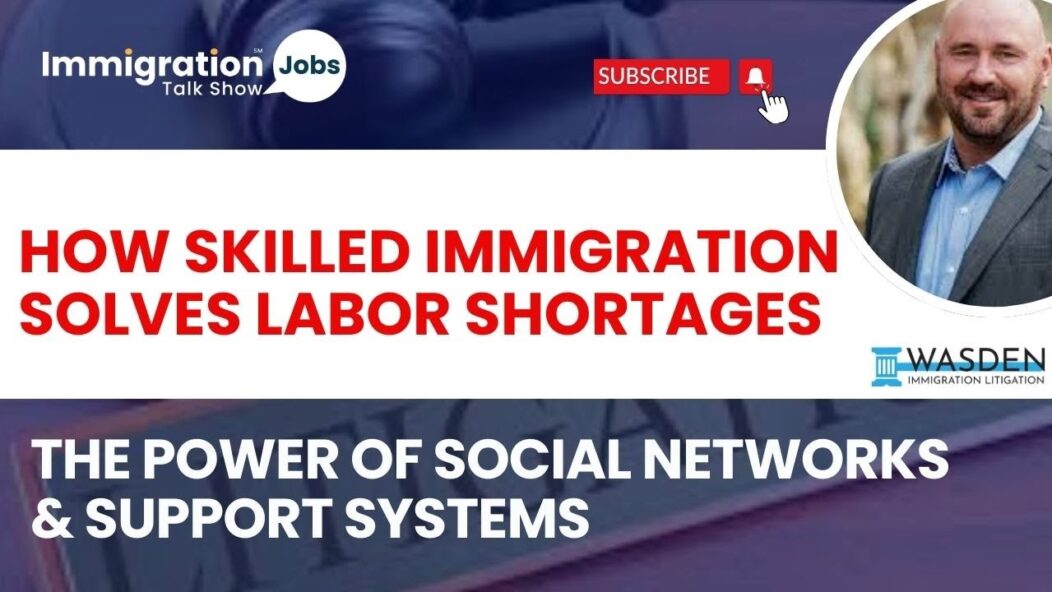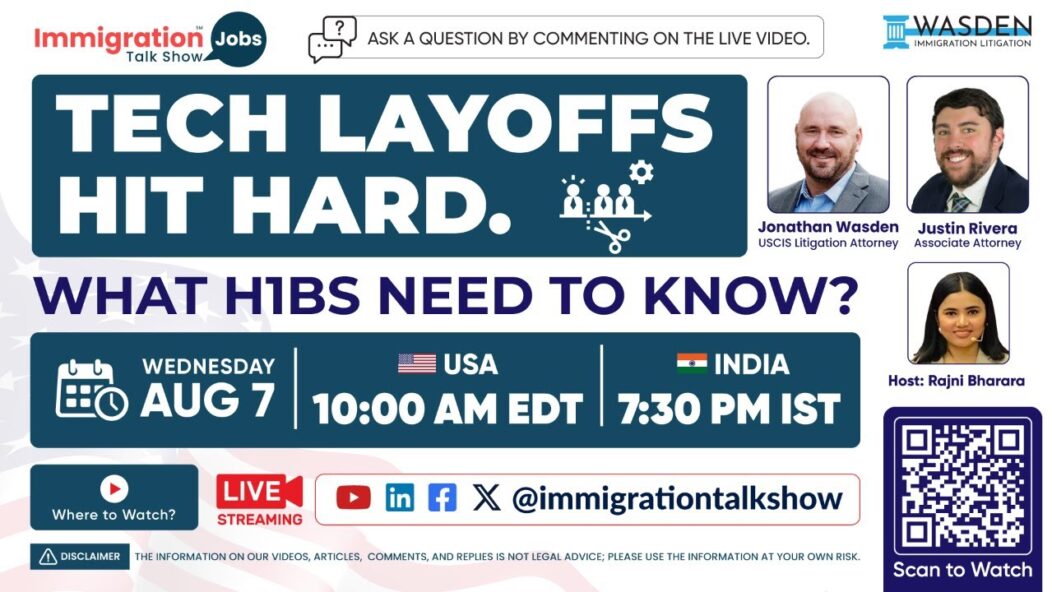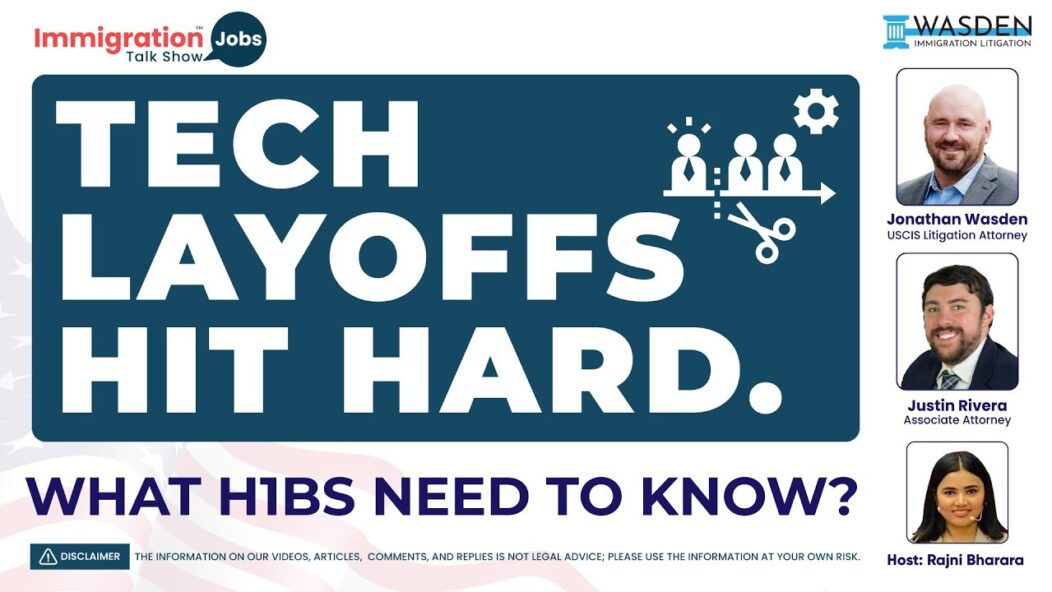The O-1A visa is a special type of work visa for people who have extraordinary skills in fields like science, technology, engineering, and mathematics (STEM). This visa allows talented individuals to work in the U.S. without the usual limits that come with other visas, like the H-1B. Understanding the eligibility requirements and how the U.S. Citizenship and Immigration Services (USCIS) evaluates applications is crucial for STEM professionals looking to work in the United States.
Key Takeaways
- The O-1A visa is designed for professionals with extraordinary ability in STEM fields.
- Unlike the H-1B visa, there are no limits on how many O-1A visas can be issued each year.
- Applicants must provide evidence of their extraordinary ability, such as awards or published work.
- USCIS looks for strong documentation, including peer-reviewed research and expert opinions, when evaluating applications.
- Recent updates to USCIS policies focus on making it easier for STEM professionals to qualify for the O-1A visa.
Understanding the O-1A Visa for STEM Professionals
The O-1A visa is a special type of work visa for people who show extraordinary ability in fields like science, technology, engineering, and mathematics (STEM). This visa is different from the H-1B visa because it allows applicants to apply at any time and there is no limit on how many can be approved. This makes it a great option for employers looking to hire top talent without waiting for specific application windows.
Definition of Extraordinary Ability
To qualify for the O-1A visa, applicants must demonstrate extraordinary ability. This means they are among the best in their field. Here are some ways to show this:
- Winning major international awards (like a Nobel Prize)
- Being a member of prestigious organizations
- Having published work in respected journals
Comparison with H-1B Visa
Feature O-1A Visa H-1B Visa
Application Timing Anytime Specific registration period
Approval Limit No limit Subject to annual cap
Job Offer Requirement Yes Yes
Flexibility and Advantages
The O-1A visa offers several advantages:
- No numerical cap on applications, allowing more opportunities.
- Flexibility in timing, making it easier for employers to hire.
- It can be a faster option for those who qualify, avoiding the long wait times associated with H-1B visas.
The O-1A visa is a powerful tool for STEM professionals, providing a pathway to work in the U.S. without the usual restrictions of other visa types.
In summary, the O-1A visa is designed for exceptional individuals in STEM fields, offering unique benefits that can help them advance their careers in the United States.
Eligibility Criteria for O-1A Visa Applicants
To qualify for the O-1A visa, applicants must demonstrate extraordinary ability in their field. This can be shown through various means, including:
Major Internationally Recognized Awards
- Receipt of a major award, like the Nobel Prize.
- Lesser nationally or internationally recognized awards for excellence.
Documenting Extraordinary Ability
To prove extraordinary ability, applicants must provide evidence of at least three of the following:
- Membership in prestigious organizations that require outstanding achievements.
- Published materials about the applicant in major trade publications.
- Evidence of authorship of scholarly work.
- Participation as a judge of the work of others in the field.
- Evidence of significant contributions to the field.
Membership in Prestigious Organizations
- Membership in associations that require outstanding achievements.
- Letters from peers confirming the applicant’s contributions.
The O-1A visa is a powerful option for noncitizen STEM professionals to work in the U.S. It allows for flexibility and does not have a cap on the number of petitions approved.
Overall, the O-1A visa is designed for those who have reached the top of their field and can provide substantial evidence to support their application. Meeting these criteria is essential for a successful petition.
USCIS Evaluation of Evidence for STEM Experts
Importance of Peer-Reviewed Grants
USCIS places significant weight on peer-reviewed grants when evaluating O-1A visa applications for STEM experts. Being named as an investigator or researcher on a competitive grant can strongly support an applicant’s case. This demonstrates that the individual is recognized in their field and contributes to important research.
Role of Published Materials
Published materials are crucial in showcasing an applicant’s contributions. This includes:
- Articles in professional journals
- Books or chapters authored by the applicant
- Citations of the applicant’s work by other researchers
These publications help establish the applicant’s reputation and influence in their area of expertise.
Judgment of Work by Peers
Peer recognition is another vital factor. USCIS looks for evidence that the applicant’s work has been evaluated positively by other experts in the field. This can include:
- Letters of recommendation from recognized professionals.
- Reviews or critiques of the applicant’s work.
- Awards or honors received from professional organizations.
The recent updates from USCIS aim to clarify the evidence needed for O-1A applications, especially for those in STEM fields. This is part of a broader effort to make the process more accessible and predictable for applicants.
Recent USCIS Policy Updates and Their Impact
Clarifications on Evidence Requirements
On July 22, 2022, USCIS made important updates to its Policy Manual regarding the O-1A visa, especially for those in STEM fields. This update aims to provide clearer guidelines on what evidence can support O-1A petitions. Key points include:
- Being named as an investigator or researcher on a peer-reviewed U.S. government grant can strengthen a petition.
- The updates do not change the legal standards but clarify how evidence is evaluated.
- These changes are part of a broader effort to improve pathways for international STEM experts.
Focus on STEM Fields
The recent updates emphasize the importance of STEM professionals in the U.S. economy. By making it easier for these experts to obtain O-1A visas, USCIS aims to:
- Attract top talent in science and technology.
- Support innovation and job creation.
- Enhance the competitiveness of the U.S. in global markets.
Implications for Visa Applicants
For applicants, these updates mean:
- A clearer understanding of what evidence is needed.
- Potentially higher chances of approval if they can demonstrate their contributions to STEM.
- The need to stay informed about how these policies are applied in practice.
The updates signal a positive shift towards recognizing the contributions of STEM professionals, making it crucial for applicants to present strong evidence of their extraordinary abilities.
Challenges and Considerations for O-1A Visa Applications
Stringent Standards and Evidence
Obtaining an O-1A visa can be quite difficult due to its strict requirements. Applicants must provide extensive documentation to prove their extraordinary ability. This includes:
- Major internationally recognized awards
- Membership in prestigious organizations
- Published materials about their work
These requirements can be overwhelming, especially for those who may not have a long list of achievements.
Employer-Specific Petitions
Another challenge is that the O-1A visa is tied to a specific employer. This means that if an applicant wants to change jobs, a new petition must be filed. This can lead to delays and complications in the visa process. Additionally, if the employer withdraws support, the visa may be at risk.
Handling the Application Process
The application process itself can be complex. Applicants often face issues such as:
- Failing to meet the O-1 visa criteria
- Providing an incomplete O-1 visa application
- Problems with the employment relationship
These factors can lead to delays or even denials of the visa application.
The O-1A visa process requires careful planning and thorough documentation to avoid common pitfalls.
In summary, while the O-1A visa offers many advantages, applicants must be prepared to face significant challenges during the application process. Understanding these hurdles can help in successfully negotiating the path to obtaining this visa.
Strategies for Strengthening O-1A Visa Petitions
Gathering Comprehensive Documentation
To improve your chances of getting an O-1A visa, it’s important to collect strong evidence. Here are some key documents you should consider:
- Major awards: Include any internationally recognized awards you have received.
- Published work: Provide copies of your research or articles published in respected journals.
- Memberships: Show proof of membership in organizations that require outstanding achievements.
Utilizing Expert Recommendations
Having strong letters of recommendation can make a big difference. Consider these tips:
- Choose reputable referees: Ask experts in your field who can vouch for your work.
- Highlight your contributions: Ensure they mention your significant achievements and impact.
- Personalize each letter: Tailor the letters to reflect your unique skills and experiences.
Highlighting Significant Contributions
Make sure to clearly outline your contributions to your field. This can include:
- Innovative research: Describe any groundbreaking work you have done.
- Leadership roles: Mention any leadership positions you have held in projects or organizations.
- Impact on the field: Explain how your work has influenced others or advanced knowledge in your area.
Remember, the O-1A visa is competitive, so presenting a strong case is essential.
By following these strategies, you can strengthen your O-1A visa petition and improve your chances of approval. The process may be challenging, but with the right preparation, you can showcase your extraordinary ability effectively.
The Role of Immigration Attorneys in O-1A Visa Applications
Assessing Case Strength
Immigration attorneys play a crucial role in evaluating the strength of an O-1A visa application. They help identify whether the applicant meets the stringent standards required for this visa. This includes reviewing the applicant’s achievements and ensuring they align with the criteria set by USCIS.
Guidance on Evidence Compilation
An immigration lawyer provides essential guidance on gathering the right evidence. They assist in compiling documentation that demonstrates extraordinary ability, such as:
- Major internationally recognized awards
- Membership in prestigious organizations
- Published materials about the applicant
Legal Support and Representation
Having legal support is vital during the application process. Immigration attorneys can represent applicants in front of USCIS, ensuring that all submissions are accurate and complete. This representation can significantly improve the chances of approval.
Immigration attorneys ensure that businesses apply for the correct visa type, improving the likelihood of approval and preventing costly delays.
Immigration attorneys play a vital role in helping individuals apply for O-1A visas, which are designed for people with extraordinary abilities. They guide applicants through the complex process, ensuring all necessary documents are in order and that the application meets all requirements. If you need assistance with your O-1A visa application, visit our website for expert help and support!
Conclusion
In summary, the O-1A visa is a valuable option for talented individuals in STEM fields who want to work in the U.S. It allows people with extraordinary skills to showcase their abilities without the usual limits of other visa types. However, getting this visa is not simple; applicants must provide strong evidence of their achievements. The recent updates from USCIS aim to make the process clearer and more accessible for STEM experts. As the rules evolve, it’s important for applicants to stay informed and prepared to demonstrate their qualifications effectively.
Frequently Asked Questions
What is the O-1A visa?
The O-1A visa is a special work visa for people who are really good at what they do in fields like science, education, business, or sports. It is for those who have skills that put them at the top of their field.
How does the O-1A visa differ from the H-1B visa?
Unlike the H-1B visa, the O-1A visa can be applied for anytime, and there’s no limit on how many can be approved. This makes it a flexible option for employers looking to hire top talent.
What awards do I need to qualify for the O-1A visa?
To qualify, you usually need to have a major award like a Nobel Prize or show proof of at least three achievements, such as winning other awards or having published work.
What kind of evidence does USCIS look for in O-1A visa applications?
USCIS looks for strong evidence like peer-reviewed research grants, published articles, and letters from experts in your field to prove your extraordinary ability.
What are the recent updates to USCIS policies for O-1A visas?
Recent updates have clarified what kind of evidence is needed, especially for those in STEM fields. This is part of an effort to make the process clearer and easier for applicants.
Why should I hire an immigration attorney for my O-1A visa application?
An immigration attorney can help you understand the complex requirements, gather the right documents, and provide support throughout the application process.
Authors: Jonathan Wasden & Justin Rivera, Immigration Attorneys
How useful was this post?
Click on a star to rate it!









